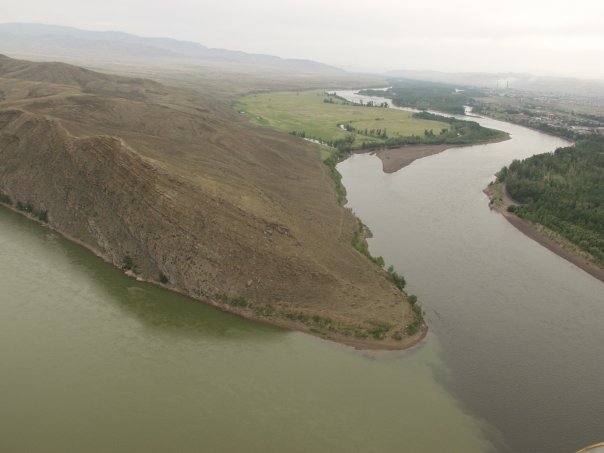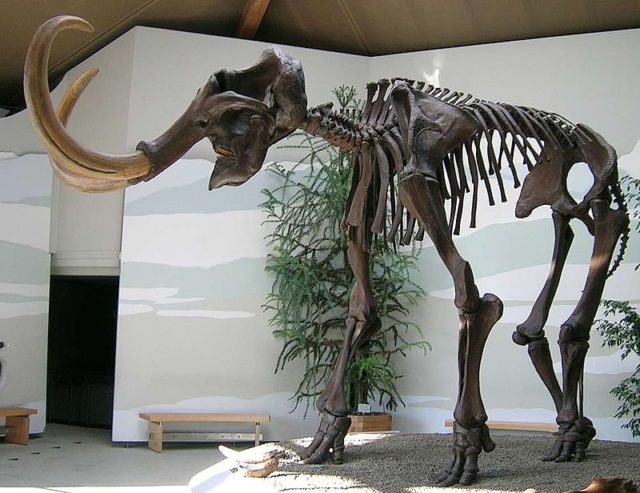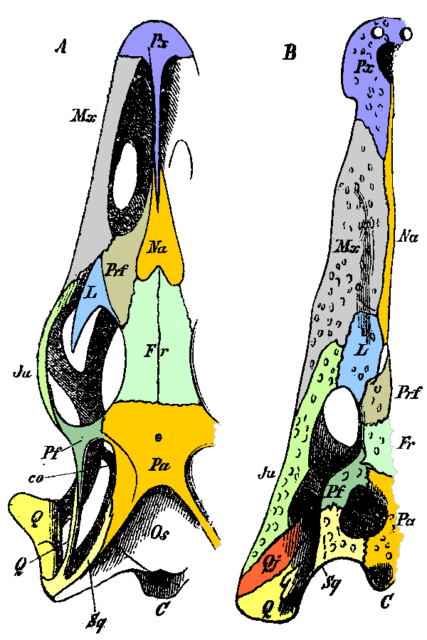Earlier this year Science Journal highlighted an ancient woolly mammoth that had suspected spear wounds. Media interest around the world peaked, and now pictures are available of this remarkable prehistoric injury previously never seen outside academic circles.
Recently The Siberian Times published the pictures of what respected Russian scientists believe are clear proof of ancient man’s attacks on a woolly mammoth, preserved in the permafrost.
If this is true, then it implies that man was present during the frozen Arctic a whole 10,000 years earlier than archaeologists previously thought.
It was established that the early Siberians were only 4,660 kilometers (2,895 miles) from what at that time was a land bridge in the middle of modern Alaska and Russia.
This is a long distance definitely, but it’s possibly the opening that the Stone Age Siberians used to settle in the Americas during this early point.
The 15-year-old male mammoth met its demise on the eastern bank of the large Yenisei River located in northern Siberia. The remnants were discovered in 2012 by a schoolboy, and since then have been recognized as the ‘Zhenya mammoth’, after the boy who discovered it, and the ‘Sopkarginsky mammoth’, coming from the place where it had been found.

The leading author of the study, Dr. Vladimir Pitulko, stated that hunters had most likely thrown light spears, a tactic still used to hunt elephants today in Africa.
The elephant is bombarded with a large number of light spears. It is then pierced, and the animal starts to loose blood. Even light spears can penetrate deeply and hit vital organs.
The mobility of the animal is limited, after which is it possible to finish it off. Archaeologists believe the same thing happened to the Spokarginsky mammoth.
One of the injuries on the mammoth was to the fifth left rib, caused by a slicing blow. It was inflicted from the front and slightly from above in a downward position. Even though it was an angle blow, it was still strong enough to go directly through the muscles and damage the bone.
A similar yet less powerful blow damaged the second right front rib. These kinds of blows were aimed toward internal organs or blood vessels.

A more powerful blow damaged the spine left of the shoulder blade. The weapon went right through the skin of the shoulder and the muscle, and almost completely made a hole in the spine of the shoulder blade.
An additional injury, possibly a blow that had missed the intended spot, was seen on the left cheek bone. The blow seemed very strong and was suffered by the animal from the left back and from the top down.
This would have been possible only if the animal was lying down on the ground, and may have been the final blow that was aimed to the base of the trunk. The spear left a clear trace which allowed archaeologists to figure out what weapon made the blow.
The bone was examined with an X-ray computer tomography – a CT scan done by Dr. Konstantin Kuper, from the Budker Institute of Nuclear Physics located in Novosibirsk. He also produced a 3D model of the injury in the bone, which guided him to the conclusion that the tip of the weapon was created from sharpened stone.
Paleontologists say its hard to know which blow was the mortal one, judging by the trace of the bones. There was a powerful blow to the left shoulder blade, but they believe it was instead the totality of the wounds that caused the death.
It is intriguing to them that a majority of the wounds are located on the left side of the animal.

They supposed that the hunters could have attacked the mammoth as it was already lying on the ground. When they analyzed the skull, they saw the abnormal development of the upper jaw. It is thought that this mammoth got this type of injury at a young age, impacting it on the left side.
The mammoth had no left tusk, and it is presumed that the left side was weak. That had helped the hunters kill the animal.
The injuries that were discovered on the bones also gave clues to what the hunters did to the mammoth after they killed it. The right tusk had traces of human interference on the tip.
They did not try to pull the tusk off the dead mammal; instead, they attempted to remove ivory with sharp edges used as butchering tools.
A mark of butchery was also discovered on the fifth left rib. It was seen as proof that the hunters had cut meat from the mammoth to take with them. Ancient man also extracted the mammoths tongue, which was probably a delicacy to hunters.
This theory of the animal being butchered does not convince all specialists. A professor of anthropology from the University of Waterloo in Canada wrote an email to Discover, saying that the skeleton is not consistent with other proof from early human hunters.
The professor argued that the most convincing proof the woolly mammoth was not butchered was the fact that archaeologists had found the mammoth’s fat hump. Gatherers located in high latitudes required fat for its good nutrition and also for fuel. This is one part of the mammal that would not be expected to be left behind.
Yet Dr. Pitulko countered this by saying that ancient man did use animal fat as food and fuel, but why they did not in this case use their prey fully is impossible to guess. There could be dozen of reasons, for instance, the carcass could have been lying on the water’s edge, and it was late in autumn.
Or maybe the poor mammal was killed just to have a meal and replenish the supply of food for a small group. There could be thousands of reasons why they did not fully use everything on the mammoth that they normally would.
He added that he believed the main reason for hunting woolly mammoths was for their tusks. Mammoths were a source of food that was not very necessary, although he thinks they were useful. The people needed the tusks for producing spears.
The Dr. advises that the human role in killing mammoths is most significant because we now know that eastern Siberia up to the Arctic limits was populated starting around 50,000 years ago.
